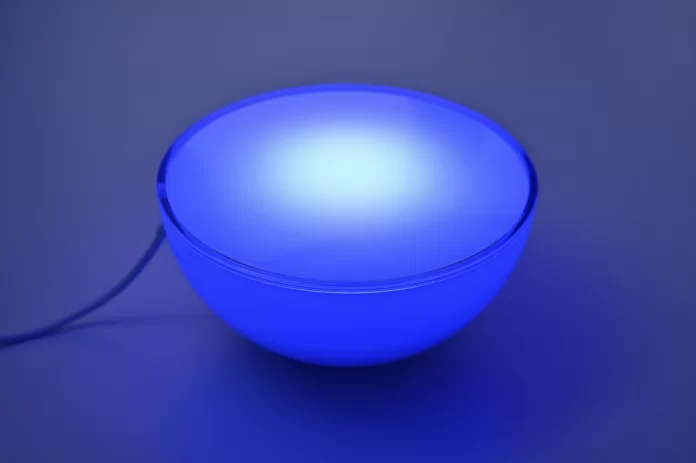Smart home technology is gradually being introduced into people’s lives and is really becoming available to almost any user. After all, it’s really convenient when you can control almost any electrical appliance using your smartphone, a special smart panel, or simply by voice (using voice assistants).
Smart home technology also includes smart lighting. Lighting has advanced considerably in the past few years, especially with the advent of LED bulbs, which use less energy, last longer, and cost less in the long run.
However, smart lighting is taking things a step further, and Philips is leading the way with its Hue line of smart bulbs. These are bulbs that work with any standard outlet you already have in your home’s lighting fixtures, but they have some additional internal components that allow you to control them wirelessly from your smartphone.
If you have already purchased a set of Philips Hue smart bulbs, you don’t have to buy an expensive Hue Bridge to control them. You can set up Philips Hue without a bridge, and here’s how you can do it.
To begin with, let’s understand in more detail what Philips Hue is.
What is Philips Hue
Philips Hue is a set of LED light bulbs that, in addition to simply glowing, are connected to your home network and controlled remotely.
In general, the Hue family includes quite a few devices:
- Ordinary bulbs with a warm white light with the ability to adjust the intensity of the glow.
- Bulbs with the ability to adjust the color and “color temperature” of white.
- Light strips, floor and ceiling fixtures with the same functions.
- Remote wireless bulb mode switches.
What is Hue Bridge
Philips Hue Bridge is essentially the “heart” of the smart lighting ecosystem. The different components of the smart home can operate based on different communication protocols. Some use a Wi-Fi connection directly to a router.
This method has its advantages in terms of compatibility, for example, you can connect them directly to your home Wi-Fi router, but such a connection is less energy efficient, and it takes longer for Wi-Fi-based gadgets to turn on.
Philips Hue devices communicate with each other via Zigbee, a more energy and resource-efficient protocol that also offers greater coverage and immunity. For Zigbee-enabled devices to not only “communicate” with each other, but also to be controlled from a smartphone or remotely, they need a “bridge” to access the Wi-Fi network. The Philips Hue Bridge is exactly that.
Philips Hue Bridge is a small white box with one button, three LEDs, and two connectors for power and networking. In fact, for the “bridge” to work, you need to plug it into an outlet, connect it to your home router, and activate it in the Philips Hue app for iOS or Android.
Oddly, there is no Wi-Fi wireless option. On the other hand, the “bridge” doesn’t require any attention once it’s installed. You can just place it next to the router and forget it.
Even if you don’t purchase the Hue Bridge now, it’s possible that you will get it later. That’s why it’s important to know how it works.
How to set up Philips Hue using the Hue Bluetooth app
In fact, it would be strange if such a modern smart lighting system as Philips Hue didn’t have the ability to configure and control the bulbs not only via bridge and Wi-Fi but also using Bluetooth.
If you are using Philips Hue with Bluetooth, you can control your lighting with the Hue Bluetooth app. Some Philips Hue bulbs have a Hue Dimmer that you can use to turn the light on and off, dim or boost the brightness, and switch between preset lighting options.
Well, if you want to set up your Philips Hue smart lighting using the Hue Bluetooth app, you have to follow these steps:
- First of all, install the Philips Hue bulbs and turn them on. That means that you have to screw the Philips Hue bulbs into the socket in the same way as you screw in any other bulb.
- After that, download and install the Philips Hue Bluetooth app on your mobile device from the Apple App Store or the Google Play Store.
- Then, open the app and tap on the “Get started” button.
- On the next screen, tap “Yes”. If you tap “No”, you will be asked to set up a Philips Hue Bridge.
- Now, set up you account. You will need to enter your name and email address. In addition, you will have to accept the terms and conditions by tapping the slider at the bottom.
- Next, choose whether you want to use a voice assistant
- Turn on the light switch and tap “Add Light”. The app will immediately start searching for your Hue lights.
- Then, tap “Pair”. A pop-up window will appear asking you to allow the app to access your device’s Bluetooth.
- Tap “Next” or “Search for more”.
- You can only select Alexa or Google Assistant. If you don’t have a voice assistant or want to set up voice assistant with Philips Hue bulbs later, you can also select “Setting up voice assistant later”.
- Finally, assign a name to the Hue bulb and tap “Next” to finish the setup process.
You have also to be aware that you can change the name of your bulbs by tapping the “Settings” icon in the bottom right corner of the app. Then go to “Lights” and select the bulb you want to name. Finally, tap the default bulb name to enter a new name.
Once you have completed these steps, you will be able to control the Philips Hue smart lighting using your mobile device.
How to connect Philips Hue to Google Home
Now, you can connect your Philips Hue to your Google Home device. In order to do this, you have to follow these steps:
- Install your Philips Hue bulbs and turn them on.
- After that, open the Google Home app on your mobile device.
- Then, tap on the “+” icon in the upper left corner of the screen.
- Select “Set up device” from the list of options.
- Tap on the “Set up new devices” option and select “Next”.
- Choose “Light bulb” and tap “Set up”.
- Select a room where you device is placed and tap “Next”.
- Finally, create a unique name for your bulb.
Once you have completed these steps, your Philips Hue bulb will be connected to your Google Home.
If you cannot control Philips Hue lights, make sure that Hue and the Google smart speaker are on the same WiFi network. Also, check that you are using the same Google account for the Google Home app and the Google Nest smart speaker.
How to connect Philips Hue to Alexa
If you want to connect your Philips Hue to Alexa, you have to follow these steps:
- Install your Philips Hue bulbs and turn them on.
- Open the Alexa app on your mobile device.
- Then, tap “More” and select “Add a Device”.
- Tap “Light” and choose “Philips Hue”.
- After that, tap “Yes” and select “Discover Devices”.
- Alexa will automatically search for nearby devices. Bring your cell phone as close as possible to the Philips Hue bulb while the app searches for devices. All you have to do is bring your device close to the bulb and it blinks once.
- Next, wait for Alexa to connect to the Philips Hue bulbs.
- Tap “Set up device” and “Choose Group”.
- Finally, choose the room where your light is and tap “Continue” on the next to page to finish the setup.
Once you have connected Alexa to your Philips Hue bulbs, you can use voice commands to control them. Simply say, “Alexa turn off the lights in the kitchen”, or “Alexa, dim the lights in my bedroom to 50%”. If you have colored lights, you can also say, “Alexa, turn the lights in the living room red”.






